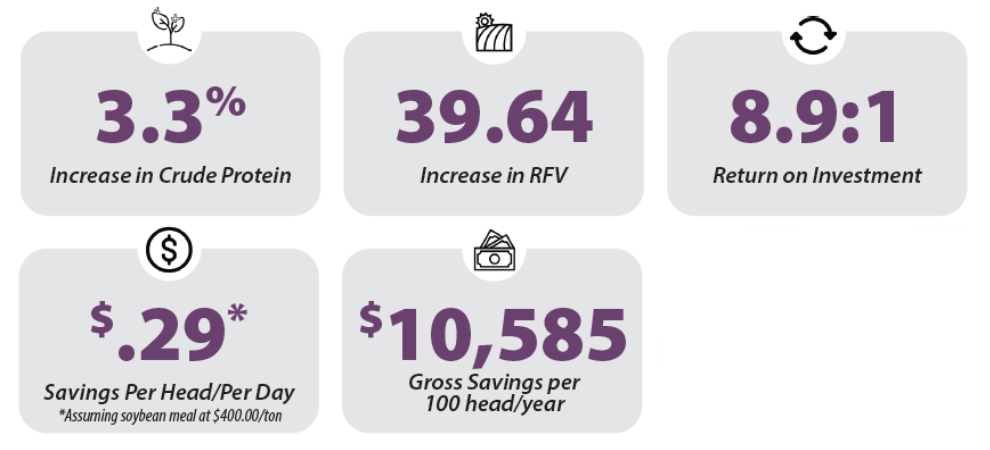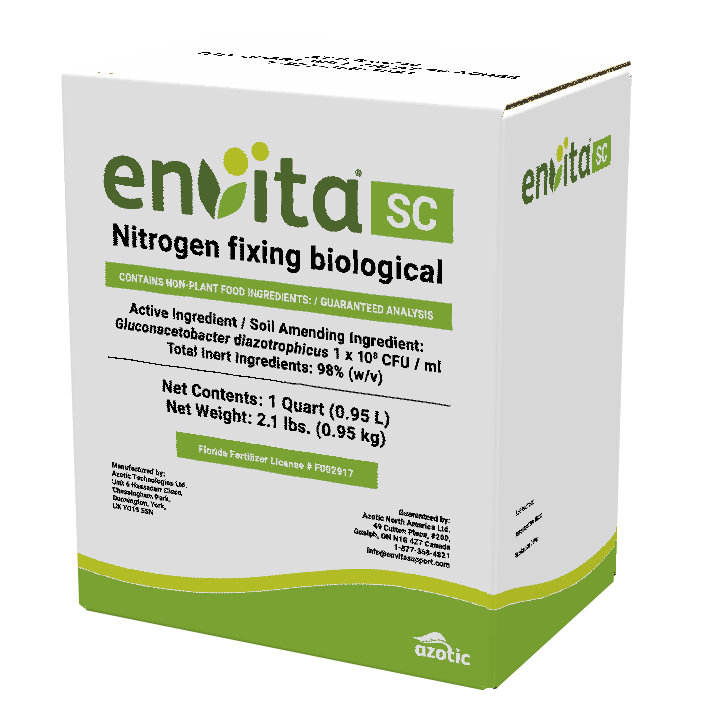
ALFALFA
Legend Seeds offers seven alfalfa choices to support your goals and operation needs.
These varieties range from high quality traited alfalfa packages to conventional blend options.
HarvXtra® Alfalfa contains industry leading genetic enhancements that reduce the lignin content and increase forage quality. This allows flexibility to harvest at the regular interval and get very high quality forage or delay harvest to increase yield and get similar quality as a conventional alfalfa at an earlier growth stage. Research shows that cutting HarvXtra® 7 to 10 days later than conventional alfalfa provides similar quality.
Roundup Ready® Alfalfa - What if you could harvest new seeding alfalfa with no herbicide stunting and get dairy quality forage? That is the reality this technology offers - easy weed control management, excellent crop safety, and higher-percentage of pure alfalfa hay.
Envita Foliar Applied to Alfalfa
Quality and ROI go hand-in-hand and the synergistic combination of Legend Alfalfa varieties and Envita take quality to the next level. To provide you with confidence, Legend Seeds is committed to local testing of our products to ensure we offer the right seed and biological on the right acre.
Below is the multi-plot data summary of Envita on Legend Alfalfa at various locations across our footprint

 Key Benefits:
Key Benefits:
- N-fixing bacteria that works within the plant all season long!
- Works throughout the entire plant to supplement nitrogen where & when it’s needed.
- Easy to tank mix and apply in-furrow or foliar.
Visit our Biologicals page to learn more!
Alfalfa Key:
| Regrowth | Winter Hardiness | Fall Dormancy |
| 1 = Excellent | 1 = Excellent | 1 = Very Dormant |
| 5 = Average | 3 = Average | 10 = Very Non-Dormant |
| 10 = Poor | 5 = Poor | |
| Product | DRI | Regrowth | Fall Dormancy |
Winter Hardiness | Anthracnose | Aphanomyces Race 1 |
Aphanomyces Race 2 |
Bacterial Wilt |
|---|
Steps to Successful Alfalfa Seeding:
Site Selection:
► Alfalfa does best on well-drained deep soils
► Avoid hilltops, shallow and highly eroded soils, and fields with low spots where water is known to pool
► Following alfalfa in the rotation with newly seeded alfalfa is not advisable due to autotoxicity
Seedbed Preparation:
► Provide a proper seedbed with firm ground and small clods. Preferably roll the ground before and/or after planting
► Good seed–to–soil contact is essential for uniformemergence
Seeding Rate:
12-20 lbs. pure live seed (PLS) per acre
Seeding Depth:
Heavy soils – ¼ to ½” • Sandy soils – ½ to ¾”
Soil Fertility and pH:
► A soil test should be done prior to field preparation to determine the fertility needs
► Fertility management ensures good stands and vigorous growth
-
- Soil pH is extremely important in establishing alfalfa and in high production acres
- Maintain soil pH between 6.7 and 6.9 since soil nutrients are most available within this range
- Phosphorus is critical to healthy root development and stand establishment
- Potassium is needed for good plant growth, high yields and winter hardiness
- Remember to monitor micronutrients like sulfur, boron and calcium as well

